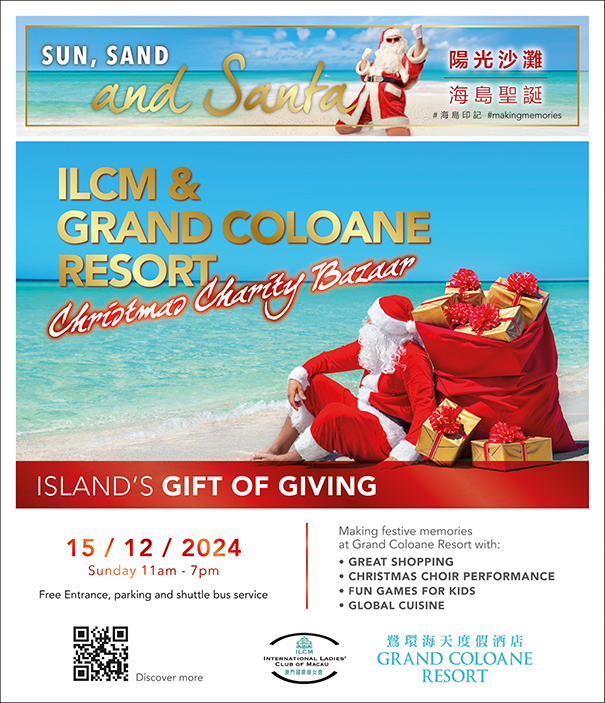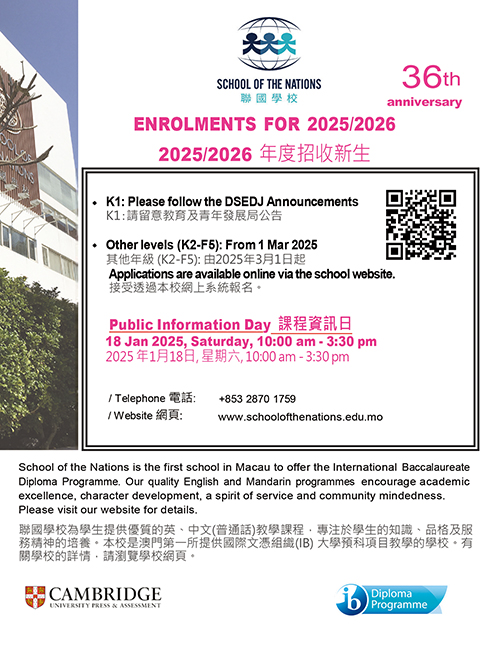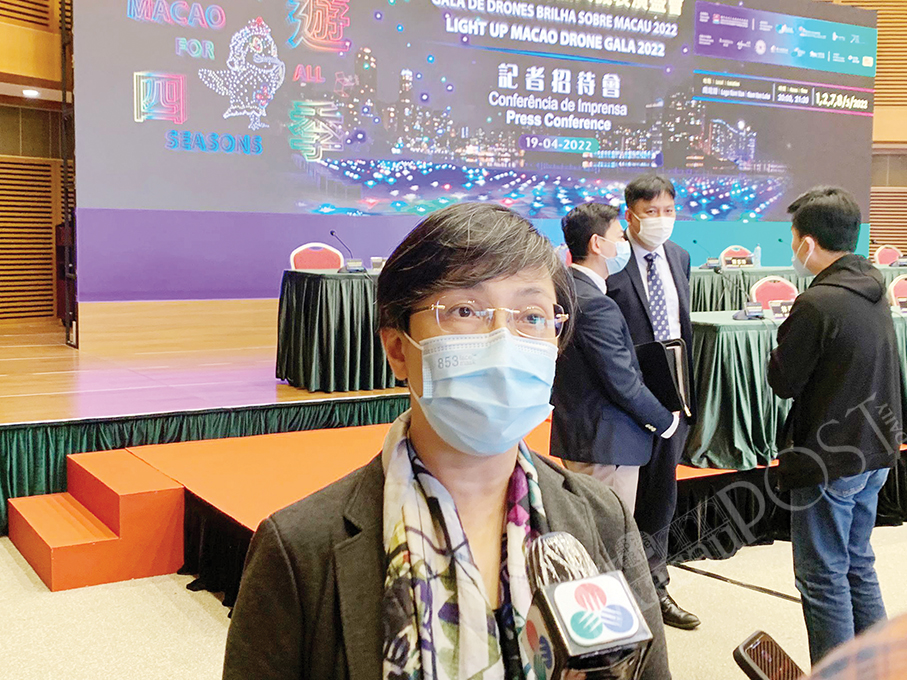The Health Bureau (SSM) has rolled out the mobile app version of the Macau Health Code that contains a contact tracing function.
The new contact tracing function aims to enable residents to record their whereabouts accurately, which will help health officials in their epidemiological investigations in case the city is hit by a local COVID-19 epidemic.
The Macau Health Code mobile app, a trial version, is now available for smartphone users to download. The new contact tracing function will initially only be used at public medical institutions, namely the public Conde de São Januário Hospital Centre, health centres and health stations, and other Health Bureau facilities. In addition, during the ongoing trial-run period of the Macau Health Code mobile app, the contact tracing function will also be used at the three-day Macau Grand Prix and the 17-day Macau Food Festival. Both start today.
After the trial-run period, the use of the contact tracing function will be extended to various premises and venues in the city.
The website version of the Macau Health Code will remain operational, which means that smartphone users can choose to continue using the website version or switch to the mobile app version, when generating their health code. However, the new contact tracing function is only available on the mobile app version.
While using the mobile app version, Macau Health Code users can choose whether or not to use the contact tracing function – scanning the QR codes placed on the premises and venues they are visiting. However, the Health Bureau said yesterday that it will not rule out the possibility of requiring all those entering certain premises and venues to use the contact tracing function in case Macau is hit by a local COVID-19 epidemic.
The Health Bureau underlined yesterday that when using the contact tracing function, the users’ travel history records will only be stored on their smartphones after they scan the QR codes, and will not be uploaded onto the bureau’s database, as the function merely aims to help them record their whereabouts.
Health Bureau Control of Communicable Diseases and Surveillance of Diseases Department Coordinator Leong Iek Hou announced details of the Macau Health Code mobile app and its contact tracing function during yesterday’s regular press conference by the Novel Coronavirus Response and Coordination Centre.
The Health Bureau revealed several months ago that it was developing a new function on the Macau Health Code that will enable residents to record their whereabouts on their smartphones.
Since the Macau Health Code came into use in May last year, smartphone users have been generating their health codes on the website version of the health code system.
More and more functions have been added to the Macau Health Code system since its launch last year.
In addition to a QR three-colour code (green, yellow and red) that indicates the smartphone users’ risk of having been infected with COVID-19, the Macau Health Code also displays their COVID-19 nucleic acid test (NAT) results and their COVID-19 vaccination records.
Those who have been identified by the Health Bureau as incurring the risk of having been infected with the novel coronavirus will have their Macau Health Code colour turn yellow or even red, depending on the respective risk level.
Only those with a green Macau Health Code are allowed to enter certain premises and venues, and use public transport.
Those with a yellow Macau Health Code are barred from leaving Macau, entering certain premises and venues, and taking public transport.
Normally, those who have had their Macau Health Code colour turn red will be transferred by the Health Bureau for medical observation at a quarantine facility for a period of time whose length will be determined on a case-by-case basis by the bureau depending on the respective individual’s situation.
3 major objectives
During yesterday’s press conference, Leong said that the new contact tracing function on the Macau Health Code mobile app has three major objectives, namely 1) to help confirmed COVID-19 patients and those who have been in contact with novel coronavirus patients to remember their recent local travel history accurately, with the aim of facilitating the Health Bureau’s COVID-19 epidemiological investigations; 2) to enable Macau Health Code users to compare their whereabouts records with those of confirmed COVID-19 patients, and those who have been identified as having been in contact with novel coronavirus patients will be notified by SMS about the COVID-19 risk they have incurred; and 3) to enable the Health Bureau to quickly identify those who at risk of having been infected with the novel coronavirus, with the aim of helping its fight against COVID-19.
Leong noted that the website version of the Macau Health Code is mainly used for a digital health declaration function, while the mobile app version has two additional functions. The first new function enables smartphone users to record their whereabouts, while the second new function enables the users to assess their COVID-19 infection risks by confirming whether they have been in contact with those who are later confirmed as novel coronavirus patients, according to Leong.
Contact tracing function’s modus operandi
Leong elaborated on details of the modus operandi of the new contact tracing function. Firstly, Leong said, Macau Health Code mobile app users can record their local travel history by scanning the QR codes placed at the respective premises and venues they are visiting.
Secondly, Leong said, the users’ travel history records will only be stored on their smartphones for 28 days. The records will be automatically deleted after the 28-day period.
Thirdly, according to Leong, in case Macau has new local COVID-19 cases, health officials will help the confirmed patients upload their whereabouts records onto the Health Bureau’s database as long as they agree, after which the Macau Health Code IT system will classify the respective premises and venues as ones with a COVID-19 risk. In addition, Leong said, health officials can also classify certain premises and venues as having a COVID-19 risk on the system after they get the relevant information in their epidemiological investigations.
In a scenario in which confirmed COVID-19 patients refuse to upload their whereabouts records from their smartphones onto the bureau’s database, Leong said that according to the Law on the Prevention, Control and Treatment of Infectious Disease, the patients must report their travel history to the health officials as much as they manage to remember, in which case the officials can enter the information onto the Macau Health Code IT system.
Fourthly, according to Leong, Macau Health Code mobile app users can choose an option on the app to download the latest list from the bureau’s database classifying premises and venues with a COVID-19 risk – i.e., those who have been visited by those who are later confirmed as COVID-19 patients, so as to compare their whereabouts records stored on their smartphones with the list.
Leong said that if the users have been identified as having visited the same places as confirmed COVID-19 patients at the same or similar time, their Macau Health Code will turn to yellow, in which case they will also receive an SMS telling them to contact the bureau for follow-up action.
Fifthly, Leong underlined that only after Macau Health Code mobile app users agree, will their whereabouts records be uploaded onto the bureau’s database.
According to Leong, the Macau Health Code mobile app is available on the iOS system’s app store (App Store) for iPhone users to download. However, smartphone users with the Android operating system have to visit https://www.ssm.gov.mo/healthPHD to download an APK file for the installation of the app on their phones, because, according to Leong, Android’s app store – Google Play – is yet to approve the Macau Health Bureau’s application for the Macau Health Code mobile app to be released on the platform. Once the app is released on Google Play, Android smartphone users can also download the app from the app store.
After downloading the app, Leong said, the smartphone users will have to fill in their personal and contact information first, before they can start using the app – like the situation when smartphone users use the health code’s website version for the first time.
According to Leong, the Macau Health Code mobile app users can scan the QR codes in premises and venues they are visiting by pressing the button on the right bottom corner of the app.
During the ongoing trial-run period of the Macau Health Code mobile app, Leong said, smartphone users can submit their opinions and suggestions to the app on https://www.ssm.gov.mo/covidq with the aim of enabling the bureau to making constant improvements to the app.
Leong underlined that although the Health Bureau has now launched the health code’s app version, its website version – but without the contact tracing function – will remain operational.
Leong said that whether the health code’s website version would remain operational after a longer time would depend on the number of residents still choosing to use the website version. Leong said that the bureau will possibly cancel the website version if only very few people still use it.
Leong underlined that the contact tracing function is used on a voluntary basis. But she was quick to add that the bureau will not rule out the possibility of requiring all those entering certain premises and venues to use the contact tracing function in case Macau confirms new local COVID-19 cases.
Health Bureau (SSM) Control of Communicable Diseases and Surveillance of Diseases Department Coordinator Leong Iek Hou addresses yesterday’s press conference about the city’s novel coronavirus (COVID-19) situation. Photo: Tony Wong

This screenshot taken last night shows the interface of the Macau Health Code mobile app showing the user’s whereabouts record.







